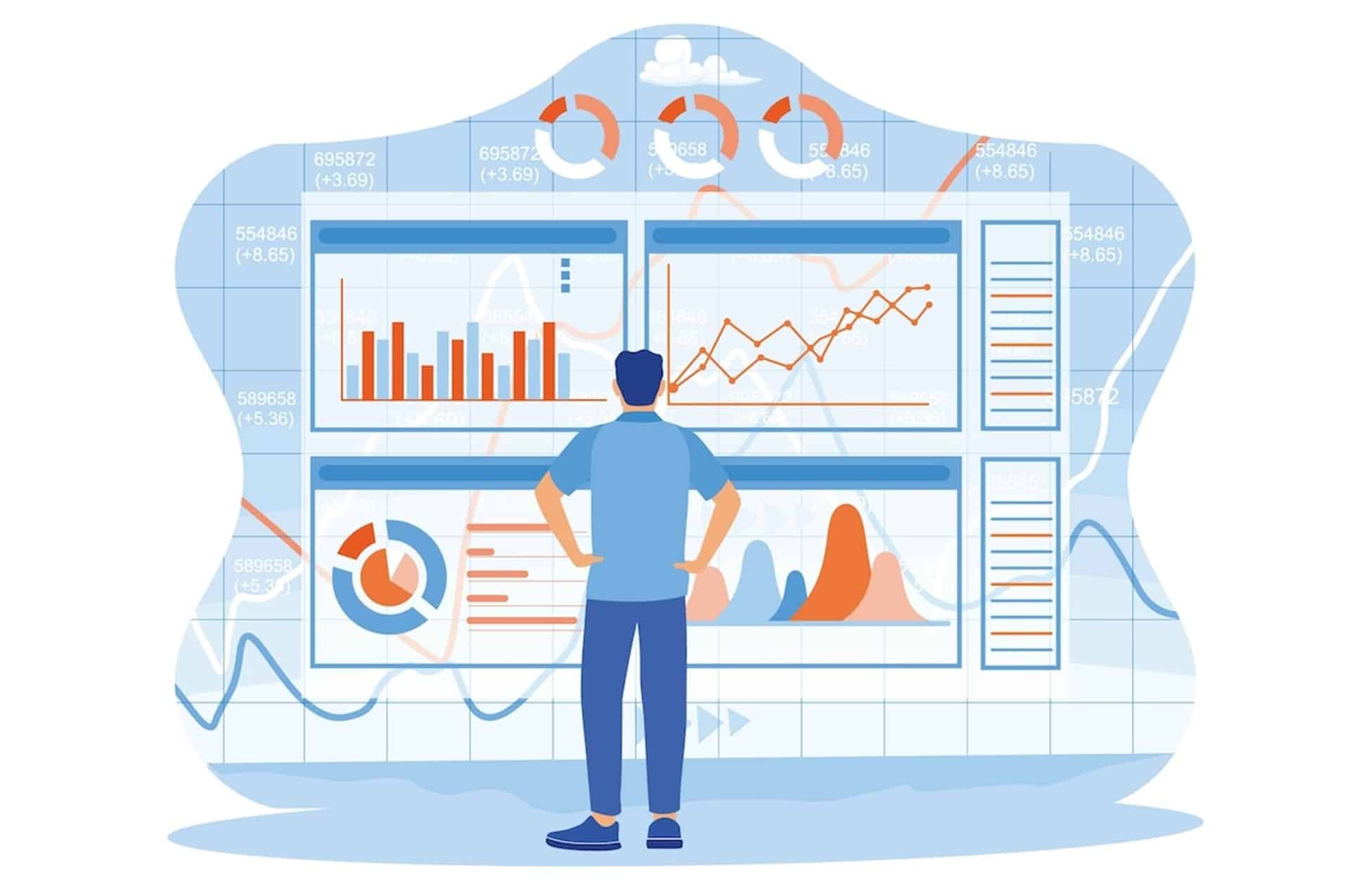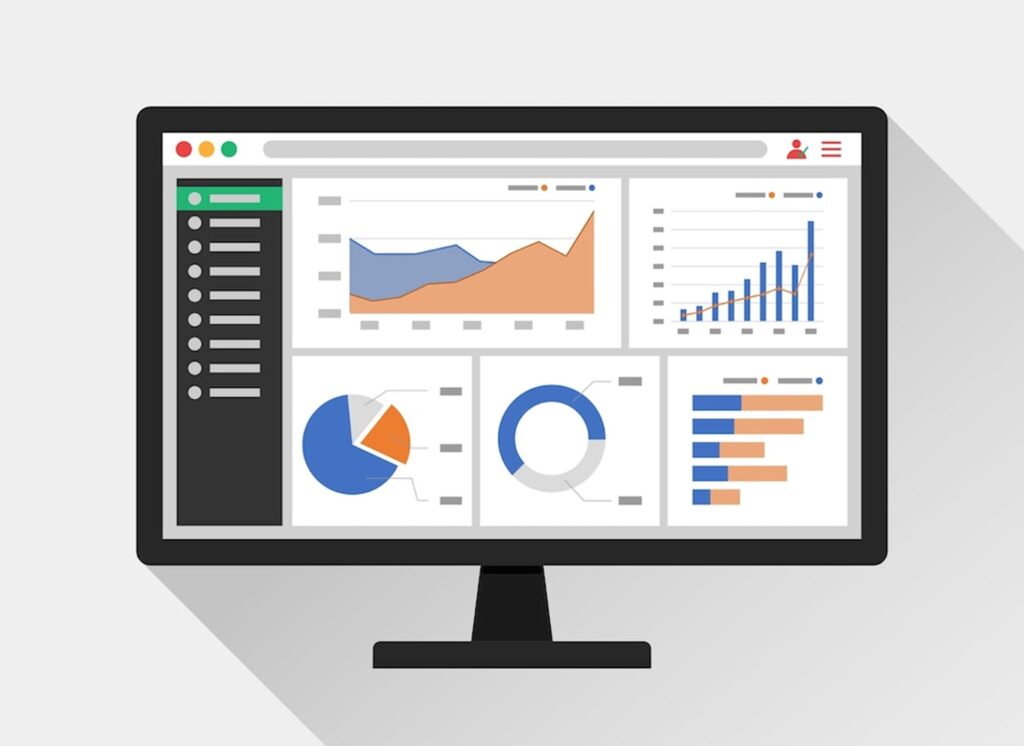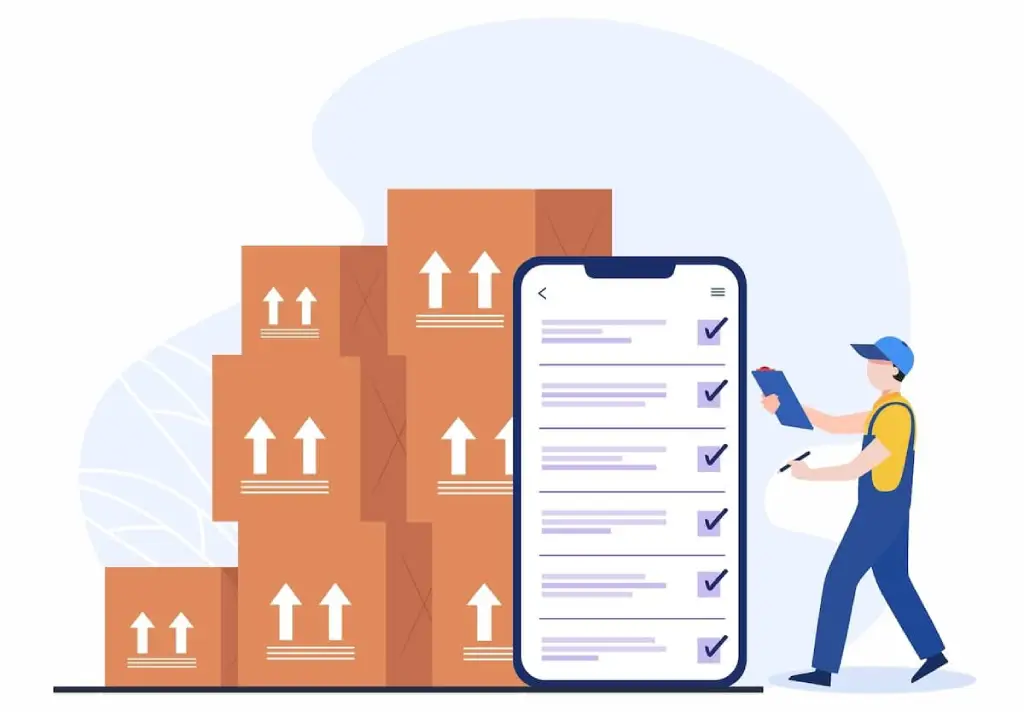
Unlock the power of data with our comprehensive guide to reporting and analytics software.
A Practical Guide to Reporting and Analytics Software
In today’s data-driven world, reporting and analytics software has become an indispensable tool for businesses of all sizes. The ability to collect, analyze, and interpret data has revolutionized decision-making processes and driven business growth. In this practical guide, we will explore everything you need to know about reporting and analytics software, from its importance and key features to the various types available in the market. We will also delve into the factors to consider when choosing the right software, implementing it successfully, and optimizing its use. Lastly, we will take a glimpse into the future trends shaping the field of reporting and analytics software.
Understanding Reporting and Analytics Software
Before we dive into the specifics, let’s first understand what reporting and analytics software is and why it is crucial for businesses. Simply put, reporting and analytics software is a tool that enables organizations to gather, analyze, and visualize data to gain valuable insights into their operations, customers, and market trends. This software empowers businesses to make informed decisions, identify patterns, detect anomalies, and discover opportunities for improvement.
But what exactly makes reporting and analytics software so important in today’s highly competitive business landscape? Well, let’s take a closer look. By leveraging the power of data, businesses can gain a deeper understanding of their operations, customers, and market trends. This deeper understanding allows them to make accurate forecasts, identify bottlenecks, optimize processes, and enhance overall performance. In other words, reporting and analytics software is the key to unlocking the potential of data and turning it into actionable insights that drive growth, efficiency, and profitability.
The Importance of Reporting and Analytics Software
The importance of reporting and analytics software cannot be overstated in today’s highly competitive business landscape. By leveraging the power of data, businesses can gain a deeper understanding of their operations, customers, and market trends, which in turn enables them to make accurate forecasts, identify bottlenecks, optimize processes, and enhance overall performance. With reporting and analytics software, businesses can transform raw data into actionable insights that drive growth, efficiency, and profitability.
Imagine a scenario where a retail company is struggling to understand why their sales have been declining in certain regions. With reporting and analytics software, they can analyze their sales data, identify patterns, and pinpoint the root causes of the decline. They may discover that a change in consumer preferences or increased competition is affecting their sales. Armed with this knowledge, they can make informed decisions to adapt their marketing strategies, improve product offerings, or target new customer segments.
Furthermore, reporting and analytics software can also help businesses uncover hidden opportunities. By analyzing customer data, businesses can identify trends and preferences, allowing them to personalize their marketing campaigns and deliver targeted offers to specific customer segments. This level of personalization can significantly improve customer satisfaction and loyalty, ultimately leading to increased sales and revenue.
Key Features of Reporting and Analytics Software
Effective reporting and analytics software should have a diverse range of features to cater to the varying needs of businesses. Some key features to consider when evaluating software options include:
- Easy Data Integration: The software should be capable of seamlessly integrating with various data sources, such as databases, spreadsheets, and cloud platforms, to consolidate data into a centralized repository.
- Intuitive Data Visualization: The ability to present data in a visually appealing and easy-to-understand manner is crucial. Look for software that offers interactive dashboards, charts, and graphs to convey insights effectively.
- Advanced Analytics Capabilities: The software should provide a wide range of analytical tools, such as data mining, predictive modeling, and statistical analysis, to uncover trends, patterns, and correlations in the data.
- Custom Reporting and Alerts: Businesses often have unique reporting requirements. Look for software that allows users to build custom reports and set up automated alerts based on predefined conditions.
- Data Security and Compliance: Considering the sensitivity of data, it is essential to choose software that ensures data security and compliance with regulatory standards.
These features are essential for businesses to effectively harness the power of reporting and analytics software. By selecting a software solution that offers these features, businesses can gain a competitive edge by making data-driven decisions, improving operational efficiency, and staying ahead of market trends.
Types of Reporting and Analytics Software
Reporting and analytics software can be broadly categorized into three main types, each serving different purposes and catering to specific needs:
Business Intelligence Tools
Business intelligence (BI) tools are designed to help businesses analyze historical data and gain insights into past performance. These tools typically provide robust reporting capabilities, ad-hoc querying, and interactive dashboards. They are ideal for businesses seeking to monitor key performance indicators, track trends, and generate regular reports to support decision-making processes.
With business intelligence tools, organizations can dive deep into their data to uncover hidden patterns and trends. By analyzing historical data, businesses can gain a better understanding of their past performance and identify areas for improvement. For example, a retail company can use BI tools to analyze sales data from previous years and identify which products are the most popular during specific seasons. This information can then be used to optimize inventory management and marketing strategies.
Data Visualization Tools
Data visualization tools are designed to present data in visually appealing and interactive formats, simplifying the interpretation of complex information for businesses. These tools often feature intuitive drag-and-drop functionality, enabling users to craft visually captivating charts, graphs, and maps without needing extensive programming expertise. Such tools are invaluable for presenting data to stakeholders or for conducting swift data explorations.
Employing data visualization tools allows businesses to convert raw data into engaging visual narratives that are straightforward to comprehend. For example, a logistics company can leverage these tools to generate interactive dashboards that illustrate shipping volumes, transportation routes, and delivery times. By visualizing this information, logistics managers can easily spot trends and patterns, facilitating more strategic planning and enhancing operational efficiency.
Predictive Analytics Tools
Predictive analytics tools go beyond traditional reporting and analytics by providing businesses with the ability to make data-driven predictions about future outcomes. These tools utilize statistical algorithms and machine learning techniques to analyze historical data and discover patterns that can be used to forecast future trends, customer behavior, and market dynamics. Predictive analytics tools are invaluable for businesses seeking to gain a competitive edge and make proactive decisions.
With predictive analytics tools, businesses can anticipate future trends and take proactive measures to stay ahead of the competition. For example, an e-commerce company can use these tools to analyze customer browsing and purchasing behavior to predict which products are likely to be popular in the upcoming holiday season. Armed with this information, the company can adjust its inventory, marketing campaigns, and pricing strategies to maximize sales and customer satisfaction.
Related: The Top Benefits of Supply Chain Management Software
Choosing the Right Reporting and Analytics Software
When it comes to selecting the right reporting and analytics software for your business, several factors need to be considered. It is crucial to assess your business needs, evaluate software capabilities, and consider your budget and return on investment (ROI).
Assessing Your Business Needs
Begin by identifying your specific reporting and analytics requirements. Consider the nature of your business, the volume and variety of data you deal with, and the complexity of the insights you need. Are you a small e-commerce store looking to track sales and customer behavior? Or are you a multinational corporation with complex data sets that require advanced analytics? Assessing your needs will help you prioritize the features and functionalities that are most important to your business.
Evaluating Software Capabilities
Once you have a clear understanding of your requirements, it is essential to evaluate the capabilities of the software options available. Look for software that aligns with your specific needs, offers the necessary features, and provides user-friendly interfaces. Consider whether you need a software solution that can handle real-time data processing or if you require advanced visualization tools to present your insights effectively. It’s also beneficial to assess the scalability and flexibility of the software to ensure it can accommodate your future growth. After all, you want a solution that will grow with your business.
Considering Budget and ROI
Budget is a key consideration for any business decision. Determine your budgetary constraints and balance it with the potential return on investment. While it may be tempting to opt for a free or low-cost software solution, remember that the cheapest option may not always provide the necessary functionalities or support. Consider not only the upfront costs but also the long-term costs, including licensing, maintenance, and training. It’s crucial to weigh the benefits against the costs and choose software that offers maximum value for your investment.
Additionally, when evaluating the ROI, consider the potential impact on your business’s efficiency and decision-making process. Will the software help you identify cost-saving opportunities, optimize your marketing campaigns, or improve customer satisfaction? These factors can significantly contribute to the overall value of the software.
By carefully assessing your business needs, evaluating software capabilities, and considering your budget and ROI, you can make an informed decision when choosing the right reporting and analytics software for your business. Remember, selecting the right software is an investment in your business’s success.
Implementing Reporting and Analytics Software
Integrating reporting and analytics software into your organization’s operations can significantly enhance decision-making processes and drive business growth. By leveraging data-driven insights, you can gain a competitive edge in the market and optimize various aspects of your business, from marketing strategies to operational efficiency.
Implementing reporting and analytics software requires careful planning and execution. To ensure success, follow these steps:
Steps for Successful Implementation
- Define Objectives: Clearly articulate the objectives you aim to achieve with the software implementation.
- Set Realistic Timelines: Develop a realistic implementation timeline, taking into account the availability of resources and potential disruptions to operations.
- Data Preparation: Cleanse, validate, and prepare your data before importing it into the software to ensure accurate analysis.
- User Training: Provide comprehensive training to ensure users have the skills and knowledge to make the most of the software’s capabilities.
- Continuous Monitoring: Regularly monitor the software’s performance and user feedback to identify and address any issues or opportunities for improvement.
Additionally, it is crucial to establish key performance indicators (KPIs) to measure the impact of the reporting and analytics software on your organization’s goals. By tracking KPIs, you can gauge the effectiveness of the software implementation and make data-driven adjustments to optimize its usage.
Overcoming Common Challenges
Implementing reporting and analytics software can present challenges. Some common challenges include resistance to change, lack of user adoption, and technical issues. To overcome these challenges, ensure clear communication, involve key stakeholders early on, and provide ongoing support and training to users. It is also beneficial to work closely with the software provider to resolve any technical issues promptly.
Furthermore, fostering a culture of data-driven decision-making within your organization can help address resistance to change and increase user adoption of the software. Encouraging collaboration between departments and emphasizing the value of data-driven insights in driving business success can lead to a more seamless integration of reporting and analytics software into your organizational processes.
Optimizing the Use of Your Reporting and Analytics Software
Once you have successfully implemented reporting and analytics software, it is crucial to optimize its use to maximize the benefits for your organization.
Optimizing the use of reporting and analytics software involves more than just the initial setup. It requires a continuous effort to ensure that the software is being utilized to its full potential and delivering valuable insights to drive decision-making.
Regular Software Updates and Maintenance
Software updates are vital to ensure you have access to the latest features, security patches, and bug fixes. Regularly update your software and schedule maintenance activities to minimize downtime and ensure optimal performance.
Furthermore, staying up to date with software updates can also provide access to new integrations and functionalities that can further enhance the capabilities of your reporting and analytics software. By regularly updating your software, you can stay ahead of the curve and leverage the latest advancements in data analysis and visualization.
Training and Skill Development for Users
Provide ongoing training and skill development opportunities for users to enhance their proficiency with the software. This could include organizing workshops, webinars, or hiring external consultants to provide specialized training.
Investing in training and skill development for users is essential to ensure that your team can fully leverage the capabilities of the reporting and analytics software. By continuously improving their skills and knowledge, users can explore advanced features, conduct more in-depth analysis, and generate valuable insights that can drive strategic decision-making within your organization.
Future Trends in Reporting and Analytics Software
The field of reporting and analytics software is continuously evolving. To stay ahead, businesses need to be aware of the future trends that are shaping the industry.
AI and Machine Learning in Analytics
The integration of artificial intelligence (AI) and machine learning (ML) techniques in analytics will soon revolutionize the way businesses derive insights from data. AI-powered analytics will be able to process vast amounts of data, identify patterns, and provide accurate predictions, enabling businesses to make data-driven decisions in real-time.
Imagine a world where analytics software can not only analyze data but also learn from it. AI and ML algorithms will be able to adapt and improve over time, becoming more accurate and efficient in their analysis. This means that businesses can rely on their analytics software to not only provide insights but also continuously learn and evolve alongside their data.
The Rise of Real-Time Analytics
Real-time analytics is gaining prominence as businesses seek to access insights instantaneously. With the ability to monitor and analyze data as it is generated, businesses can respond quickly to changing market conditions, detect issues in real-time, and capitalize on emerging opportunities.
Imagine a scenario where a retail company can track customer behavior in real-time, allowing them to personalize offers and recommendations on the spot. Real-time analytics empowers businesses to be proactive rather than reactive, enabling them to make immediate decisions based on the most up-to-date information available.
The Impact of Big Data on Reporting and Analytics
The proliferation of big data has significantly impacted the field of reporting and analytics. With the exponential growth of data sources and volumes, businesses need robust software solutions that can handle and analyze massive datasets efficiently. As big data continues to grow, reporting and analytics software will need to adapt to handle the increasing complexity and scale of data.
Big data is not just about the size of the data; it’s also about the variety and velocity at which it is generated. Reporting and analytics software must be capable of handling structured and unstructured data from various sources, such as IoT devices, and customer interactions. Additionally, the speed at which data is generated requires software that can process and analyze it in near real-time.
Empower Your Business with Argos Software
Leveraging the right reporting and analytics software is not just an option; it’s a necessity. Argos Software is designed to meet the unique challenges of your business. Whether you’re in 3PL logistics, transportation, agribusiness, or managing a growing enterprise, Argos is tailored to empower your decision-making with precision and agility.
Why Argos Software is the Right Choice for You:
- Seamless Data Integration: Our platform ensures that your data is not just collected but integrated seamlessly from various sources, providing a comprehensive view of your operations.
- Customizable and Intuitive Reporting: With over 1,200 built-in and customizable reports, Argos turns data analysis into a strategic asset, enabling you to craft visually appealing and information-rich reports with ease.
- Real-Time Insights and Automated Reporting: Stay ahead with real-time data refreshes and automated report generation, ensuring timely insights for swift decision-making.
- Advanced Analytics: Leverage our Advanced Reporting Tool (ART) for intuitive controls and easy data grouping, enhancing your analytical capabilities.
- Operational Efficiency: Enhance your operational efficiency with scannable document generation, reducing manual errors and speeding up processes.
At Argos Software, we understand the intricacies of your business. Developed by experts with deep industry knowledge, our software is flexible, customizable, and scalable to your needs, ensuring you only pay for what you need. Argos offers a comprehensive software system designed to streamline warehousing, transportation, purchasing, human resources, and accounting processes, all unified into one solution. This all-in-one platform also encompasses reporting and analytics capabilities, providing a holistic view across your entire business operations. Our commitment is to provide you with a solution that not only meets but exceeds your expectations, driving your path to increased profitability.
Conclusion
In conclusion, reporting and analytics software is a must for businesses looking to make data-driven decisions and gain a competitive edge. By understanding the importance, key features, types, and considerations for implementation and optimization, businesses can harness the power of data to drive growth, efficiency, and innovation. Embracing future trends in reporting and analytics software will further enable businesses to stay ahead in an increasingly data-centric world.
Ready to Unlock the Full Potential of Your Data?
Discover how Argos Software can transform your data into actionable insights. Contact us today to learn more about our solutions or schedule a demo and experience firsthand the power of informed decision-making. With Argos Software, you’re not just adopting a tool; you’re embracing a partner dedicated to your success. Let’s navigate the future of your business together.







